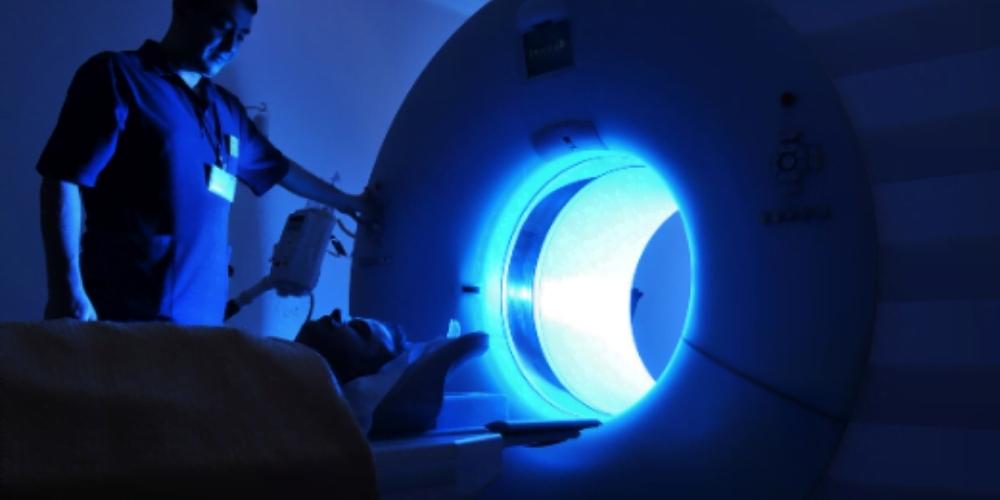A recent study found that medical imaging equipment used to scan patients can be contaminated with coronavirus 2019 (COVID-19) for up to nine days if the machines are not thoroughly disinfected. The coronavirus is highly contagious and able to stay active on metal, glass, or plastic surfaces. Researchers from the University of Greifswald and Ruhr University Bochum in Germany found that the best way to decontaminate these areas was by using a 62 percent-to-72 percent ethanol, 0.5 percent hydrogen peroxide, or 0.1 percent sodium hypochlorite within one minute of possible contamination. Their findings were published in the Journal of Hospital Infection (JHI).
“Currently, the emergence of a novel human coronavirus, temporary named 2019-nCoV, has become a global health concern causing severe respiratory tract infections in humans,” the authors write. “Human-to-human transmissions have been described with incubation times between 2-10 days, facilitating its spread via droplets, contaminated hands or surfaces. We therefore reviewed the literature on all available information about the persistence of human and veterinary coronaviruses on inanimate surfaces as well as inactivation strategies with biocidal agents used for chemical disinfection, e.g. in healthcare facilities.”
The researchers consulted 22 studies that focused on disinfection practices for coronaviruses such as severe acute respiratory syndrome (SARS) coronavirus and middle east respiratory syndrome (MERS) coronavirus. Medical facilities can also apply these disinfection practices to coronavirus 2019 (COVID-19).
The authors of the study conducted a Medline search on January 28 to gather data.
“Publications were included and results were extracted given they provided original data on coronaviruses on persistence (surfaces, materials) and inactivation by biocidal agents used for disinfection (suspension tests, carrier tests, fumigation studies),” the authors wrote.
The study noted that the viral load of coronaviruses on objects and surfaces is still unknown; however, researchers believe that it is plausible that strict disinfection practices will help deter the spread. This is especially the case when medical-grade disinfectant sprays or wipes are applied to frequently touched surfaces where one may expect the viral load to be most potent. It is vital for medical staff to properly disinfect medical imaging equipment that comes into contact with multiple patients per day. Doing so decreases the risk of coronavirus transmission.
The researchers cite the World Health Organization, which advises “that environmental cleaning and disinfection procedures are followed consistently and correctly. Thoroughly cleaning environmental surfaces with water and detergent and applying commonly used hospital-level disinfectants are effective and sufficient procedures.”
The study did not find data that described the degree to which an individual’s hands could be contaminated with coronavirus after contacting an infected surface, object, or patient. “In Taiwan, however, it was described that installing hand wash stations in the emergency department was the only infection control measure which was significantly associated with the protection
Furthermore, although hand hygiene appears to be abided by much higher during an outbreak, there continues to be a lack of consistency among physicians and medical staff. The study noted how transmission of the coronavirus can be successfully prevented when proper infection prevention measures and disinfection practices are performed on a consistent basis.
“Ethanol at concentrations between 62 percent and 71 percent reduced coronavirus infectivity within 1 min exposure time by 3.0–4.0 log10,” according to the study. “Concentrations of 0.1- 0.5 percent sodium hypochlorite and 2 percent glutardialdehyde were also quite effective with > 3.0 log10reduction in viral titre. In contrast, 0.04 percent benzalkonium chloride, 0.06 percent sodium hypochlorite and 0.55 percent ortho-phtalaldehyde were less effective.
Researchers noted that the endemic human coronavirus strain (HCoV-) 229E can remain infectious on certain surfaces for as little as 2 hours or up to 9 days. To increase patient safety, medical staff should abide by infection control standards for medical imaging equipment and properly disinfect machines with hospital-grade disinfectants after each patient use.
“A higher temperature such as 30°C or 40°C reduced the duration of persistence of highly pathogenic MERS-CoV, TGEV, and MHV,” the study states. “However, at 4°C persistence of TGEV and MHV can be increased to ≥ 28 days.”







